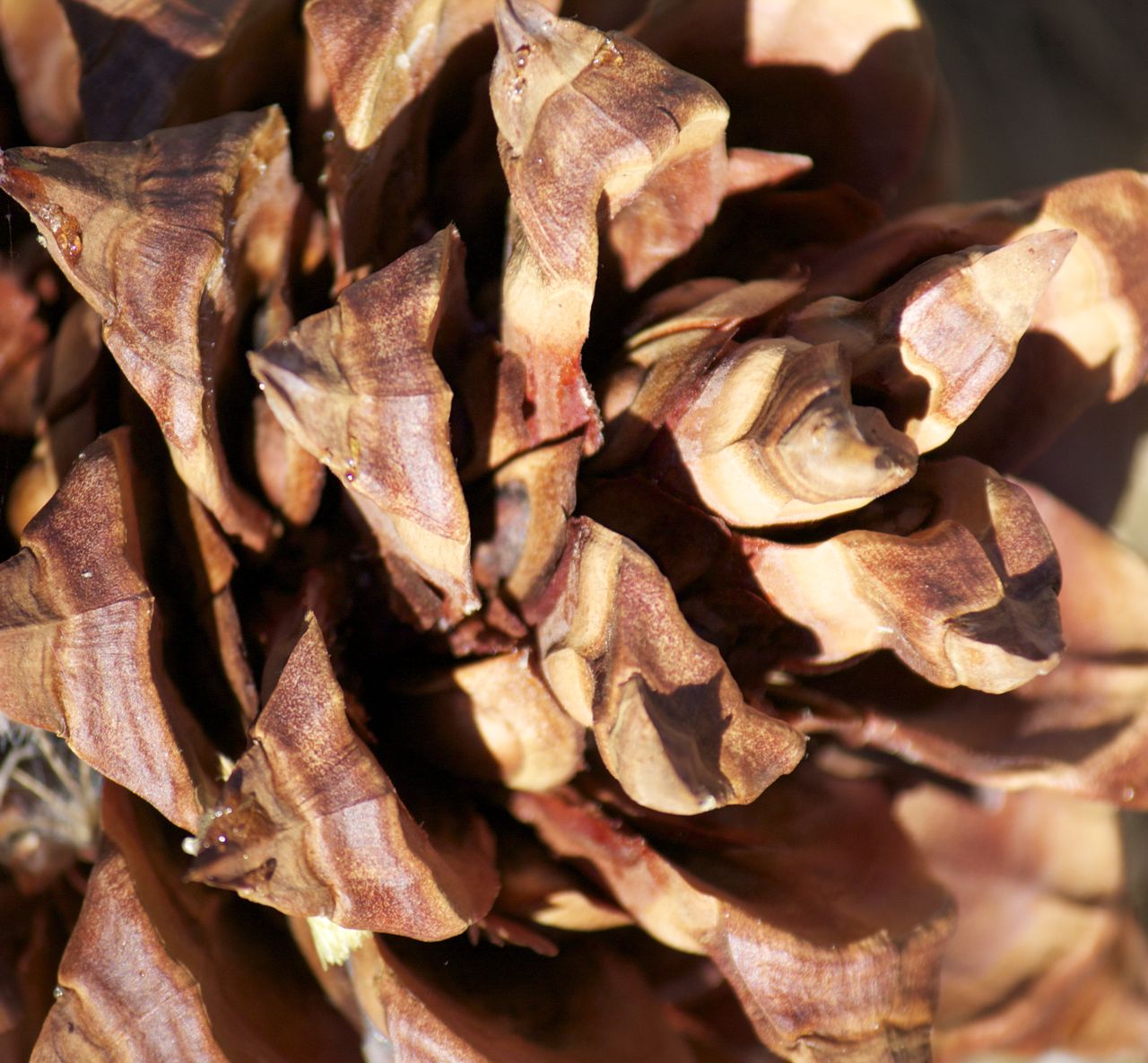
by Kathleen Scavone and Millie Simon
After the terrifying LNU Lightening Complex fires of the summer of 2020 abated, we, like so many others, could not comfortably meet outdoors for quite some time, since the smoke from the myriad devastating fires in California created hazardous air quality conditions, including at times an eerie orange sky. We spoke via telephone about a tree that is native to California, the gray pine, pinus sabiniana and its prolific seeds that were, and are still, important to many California Indian groups, such as the Wappo, Salinan, Southern Maidu, Costanoan, Kato, Pomo, and more. It was once derogatorily called “digger pine” as a racial slur, but that term is no longer used.
It is believed that the gray pine tree lives for over two hundred years, but sadly, so many of these lofty trees were chopped down by pioneers and gold seekers that not many trees were left to indicate its lifespan. The seeds of the tall (thirty-six to one hundred feet) gray pine are enjoyed several ways. They are consumed raw, pounded into flour, used in soups or breads, blended with other seed types, or roasted. In times past seeds were also prepared by parching them in baskets or cooking them in earthen ovens. Gray pine seeds are rich in calories and protein and are long-lasting in storage. In some areas the huge and heavy cones of the gray pine were collected by men who deftly climbed the tree and twisted off the unripe cones while they were still green in color to prepare them for a special syrup. The young cones would be roasted, and after around twenty minutes in the hot ash they produced a dark-hued syrup that was used as a medicine in some areas. Some groups used this syrup or pitch to relieve rheumatism. The female tree cones produce the heaviest and largest cones. Cones may weigh in at close to two pounds and are six to twelve inches long.
This distinctive, multi-purpose tree is found in oak woodlands, chaparral, and mixed conifer forests, and was utilized in some areas for its sturdy branches, which were useful as a cooking utensil and especially valuable for stirring acorn mush. Downed and dead branches of the gray pine were used for kindling and the burned tinder was applied to spider bites. The lengthy needles, eight to twelve inches in length, come in bundles of three and found a function as bedding, floor covering, or even thatch in some areas. The roots and branches also found a purpose in some groups’ basket making.
People aren’t the only ones who love gray pine, since many birds, such as red-shafted flicker, California scrub jay, and others, feed on the seeds. Bears dine on its needles, seeds, and bark, while gray squirrels devour the seeds and deer consume its small branches and needles.
There are many Native American myths that revolve around pine nuts. In S.A. Barrett’s Pomo Myths, he tells the story of Woodrat and Pine-nut-man. Woodrat found Pine-nut-man and the place he was collecting pine nuts, and inquired as to whether Pine-nut-man could amass as many pine nuts as he could. So after Pine-nut-man plucked every last pine cone from the tree, arranging them in his carrying pack, he proceeded to break open the pine cones. Woodrat, sensing that he was being ignored, told him to dig a deep hole in which to cover Woodrat, as others who did not want him around had done in the past. Pine-nut-man took his digging stick and carved a deep hole. He was so focused on digging a deep hole that he wondered if Woodrat was still up above ground waiting for him to complete his task. Woodrat assured him that he was, indeed, still waiting, but should not make further inquiries. Next, Woodrat instructed Pine-nut-man to throw him in the hole. However, it was not Woodrat he threw in, but a disguised bundle of items such as a spear, bow, and some arrows. Woodrat had taken the opportunity to depart from the region to Sacramento Valley to partake of a sweat house. Pine-nut-man was not angry at the deception, but felt that if Woodrat was smart enough to fool him, then more power to him. Pine-nut-man, who was a great tracker, found the sweat house and asked to enter. He was told to come in through the hole in the top, where Woodrat was waiting with a sharp spear to poke Pine-nut-man. As he poked, pine nuts fell from his body. Blue Jay and Gray Squirrel were curious about the cache of nuts, and commenced tasting the new treat. They proclaimed the pine nuts a great delicacy and instructed the chief to allocate it to everyone. But they all quibbled and captured the nuts, fighting amongst themselves over the pine nuts.
The sheer variety of foods, preparations, and stories which interconnect is simply enormous, and they engender a boundless source of respect and joy. When you find your own treasure trove of pine cones, be sure to enjoy them with others!




